Have you noticed more buildings using exposed wood frames? Heavy timber construction is making a comeback in modern building projects across the world.
Wood has been a trusted building material for centuries, but many builders moved away from it when steel and concrete became popular. Now, architects and engineers are looking at timber with fresh eyes.
The benefits go beyond looks. Heavy timber offers strength, fire resistance, and a smaller carbon footprint compared to other materials. Buildings made with timber can last for generations while feeling warm and natural.
Want to know why more construction firms are choosing timber for their projects? Keep reading to learn about the science, history, and real-world examples of how timber is changing building design today.
History of Heavy Timber Construction
Heavy timber construction is a building method that uses large wood sections as the main structural components. These wood members are much thicker and wider than those used in typical wood framing.
The minimum size for heavy timber elements is 5 inches in the smallest dimension for columns and 4 inches for beams.
Heavy timber construction has roots going back thousands of years across many cultures.
Ancient Uses:
- Found in early homes across Asia, Europe, and the Americas
- Featured in medieval churches with grand exposed beams
- Used in traditional barns with post-and-beam framing
- Perfected in Japanese temples with nail-free joinery
Evolution Over Centuries: Early craftspeople refined timber techniques through generations. The 1800s saw timber become standard for factories and warehouses. New sawmill technology made production faster and more precise.
Modern Resurgence:
- Interest in natural building materials
- Environmental benefits of wood
- Advanced engineering for taller wood buildings
- Public preference for warm, inviting spaces
Today’s timber structures blend traditional methods with modern technology to meet current building codes.
5 Common Applications of Heavy Timber Construction
Heavy timber construction works well for many building types. The exposed wood creates spaces that feel both solid and inviting.
1. Residential Buildings
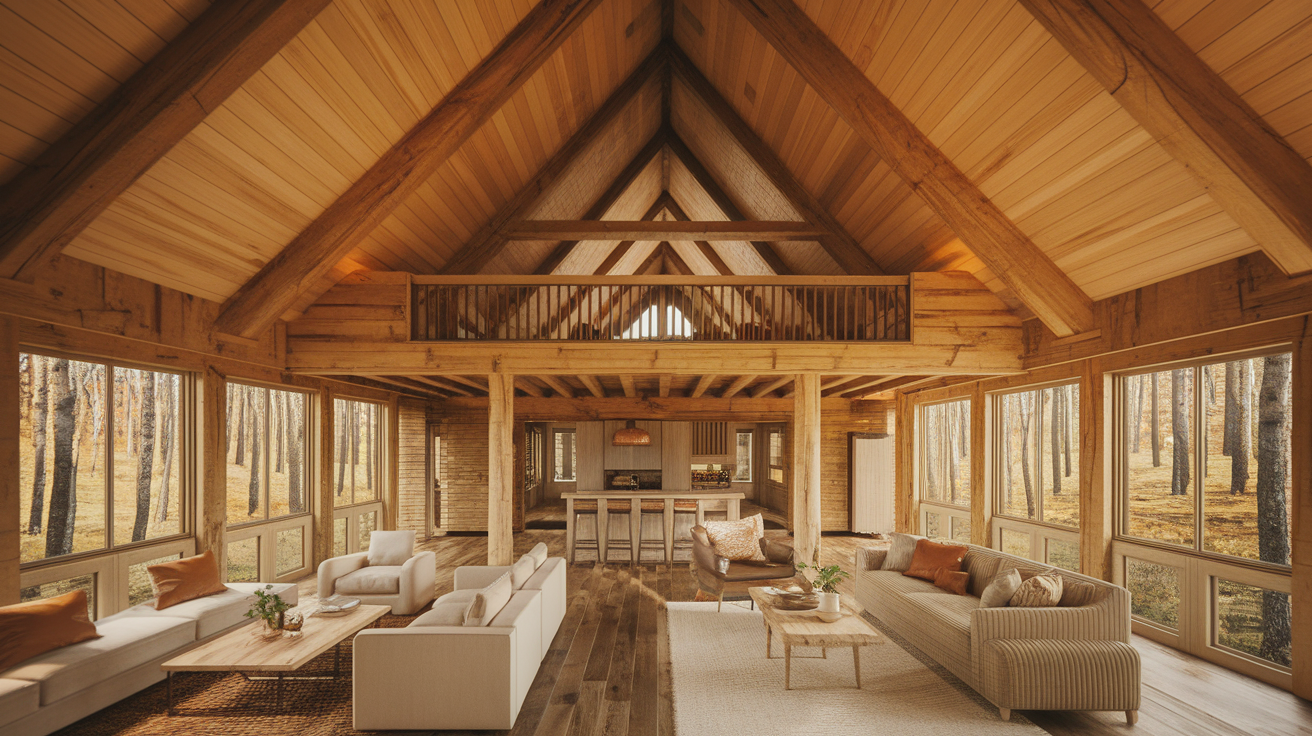
Homes built with heavy timber stand out from standard construction. Families often choose timber framing for its beauty and long-term durability.
- Custom homes with open floor plans benefit from timber’s ability to span large distances
- Multifamily buildings can use timber for both structure and visual appeal
- Vacation homes in natural settings often use timber to blend with surroundings
- Renovated lofts in old timber buildings preserve historic character
Pro Tip: In residential timber construction, plan your lighting carefully. Well-placed fixtures can highlight the natural wood grain and create dramatic shadows.
2. Commercial Spaces
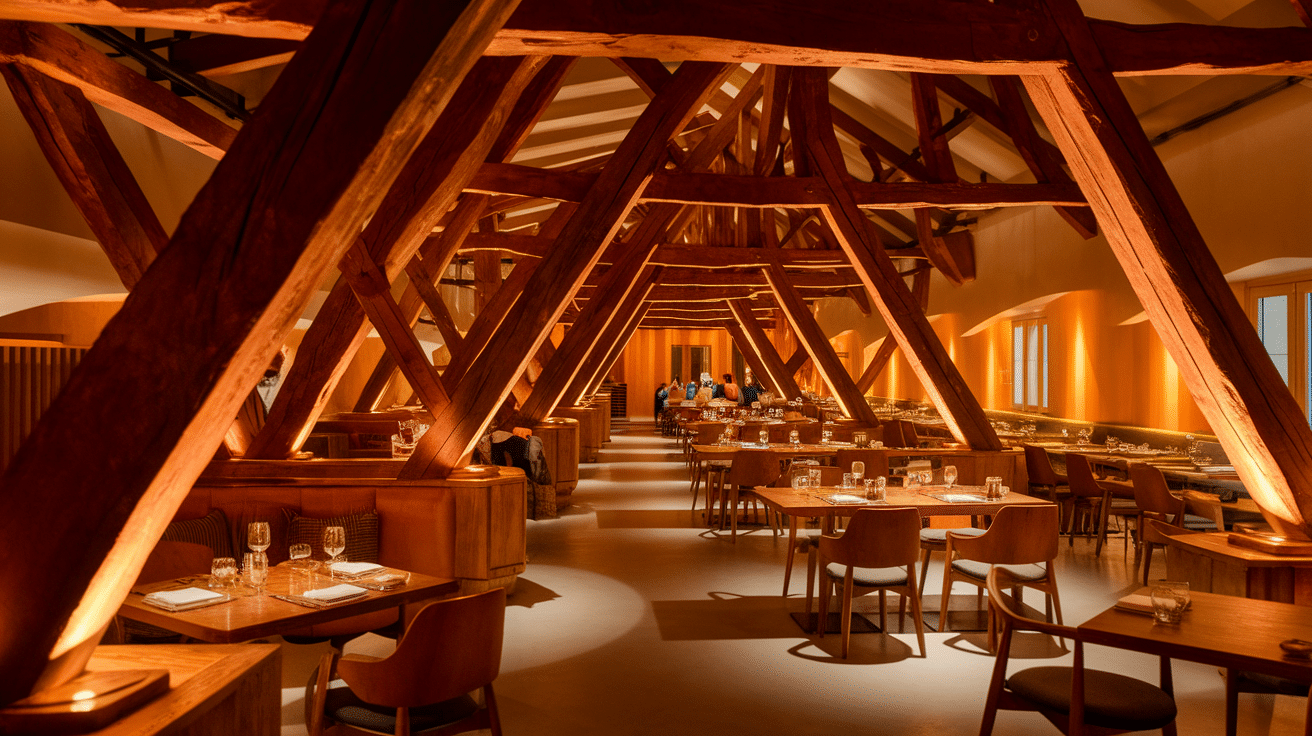
Businesses find that timber structures create positive impressions. Clients and customers often comment on the natural beauty of exposed wood beams and columns.
- Offices with timber frames often report higher employee satisfaction
- Restaurants use exposed timber to create warm, welcoming atmospheres
- Retail stores benefit from the flexibility of open timber-framed spaces
- Breweries and wineries showcase timber to enhance their craft appeal
Pro Tip: For commercial timber buildings, consider the acoustic properties early in design. Wood absorbs sound differently than other materials.
3. Institutional Structures
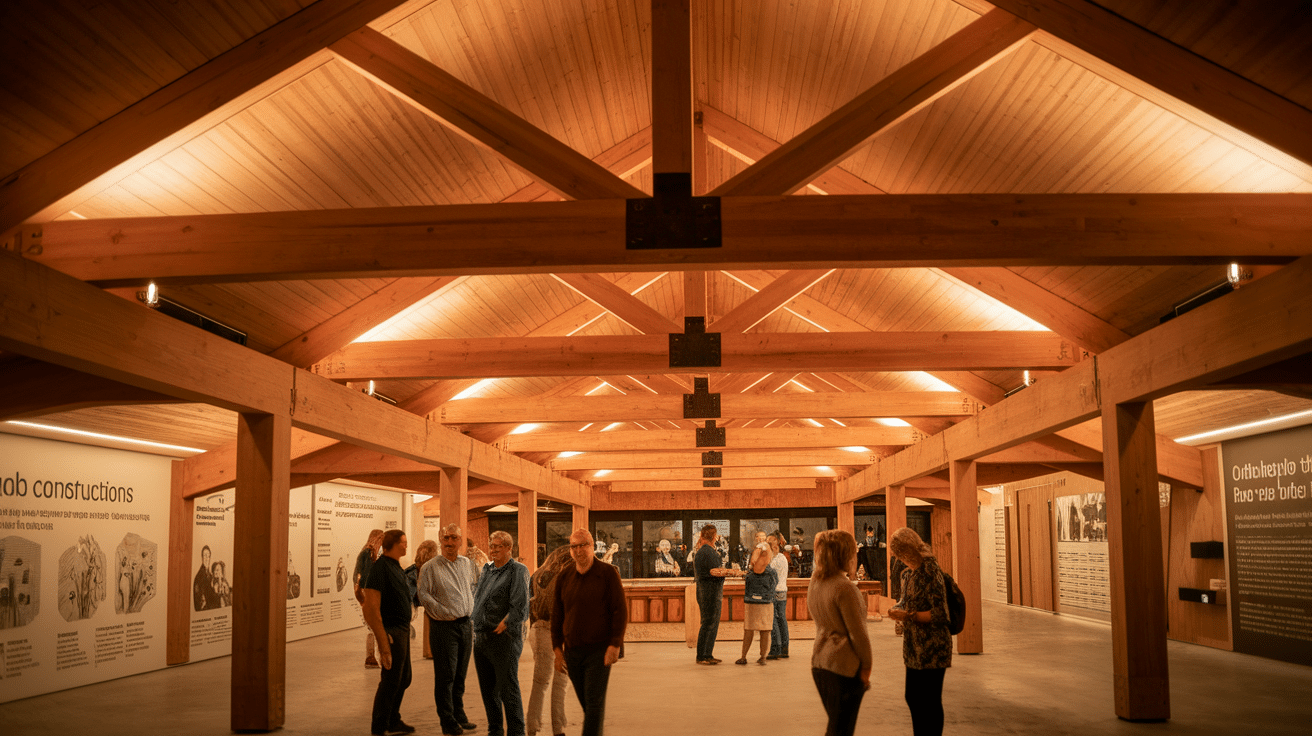
Public buildings with timber frames make strong statements about values. These structures often become beloved landmarks within their communities.
- Museums use timber for both practical and symbolic reasons
- Schools find timber creates calmer, more focused learning environments
- Churches and sacred spaces benefit from timber’s natural warmth
- Community centers use timber to create gathering spaces with character
Pro Tip: When using heavy timber in public buildings, include educational displays about the wood source and construction methods.
4. Modern Hybrid Structures
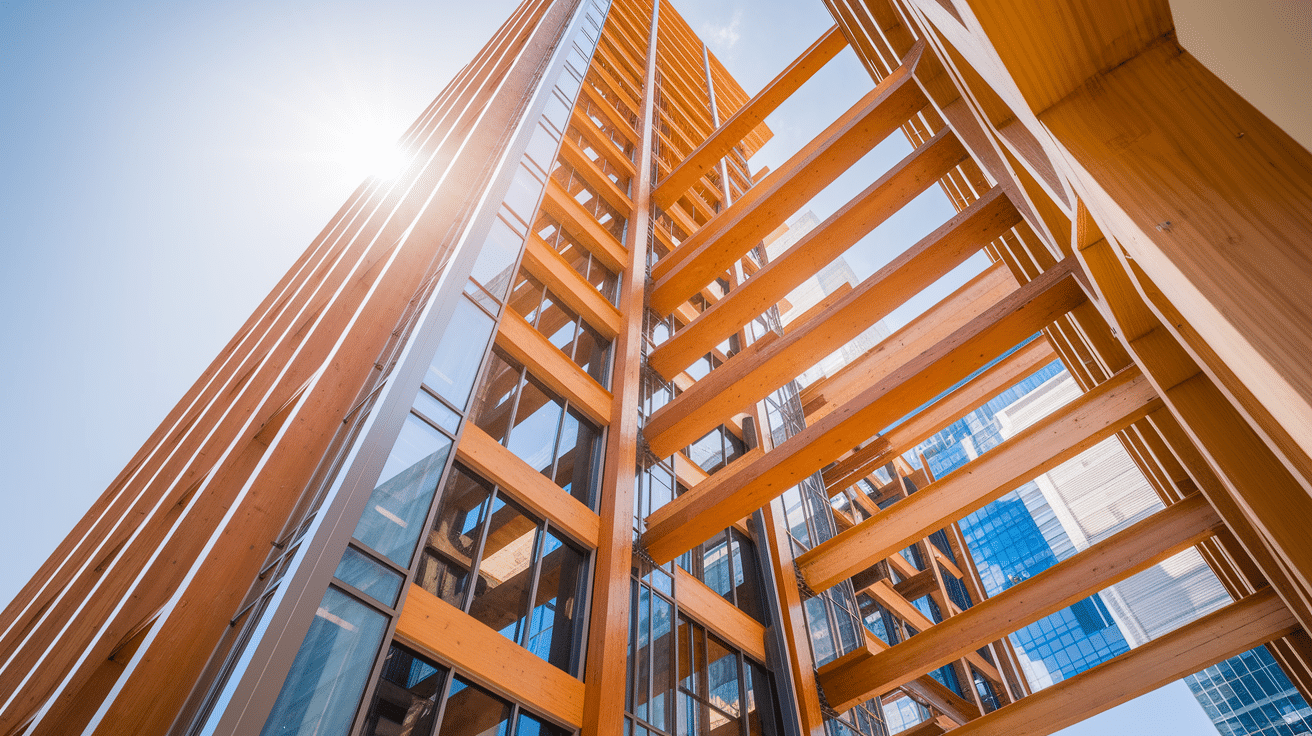
Today’s builders combine timber with other materials for the best results. This approach takes advantage of each material’s strengths while minimizing weaknesses.
- High-rise buildings now combine timber with steel for taller construction
- Glass curtain walls paired with timber frames create light-filled spaces
- Concrete foundations support timber superstructures for stability
- Bridges use timber-concrete composites for durability and strength
Pro Tip: In hybrid structures, careful detailing at material transitions prevents moisture problems and showcases each material’s strengths.
5. Agricultural Buildings
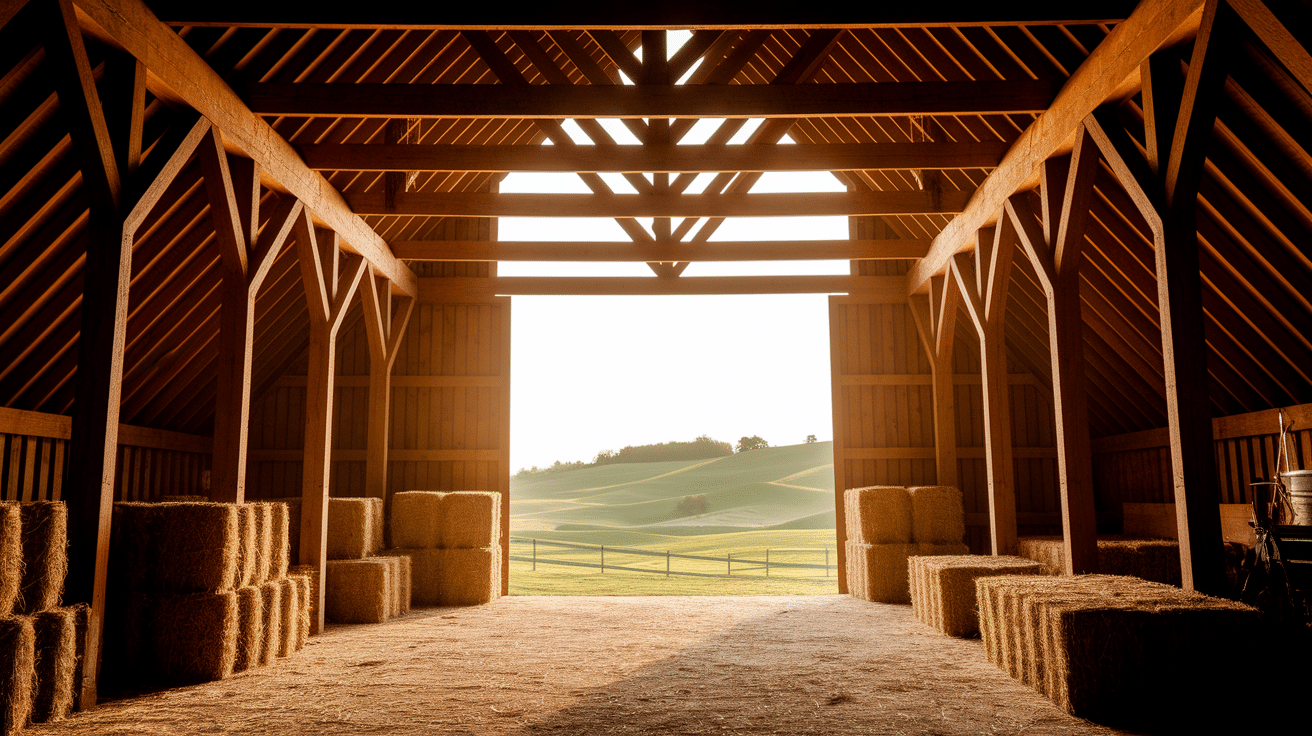
Farm structures benefit from timber’s practical qualities. The material’s strength, durability, and ease of modification make it ideal for working buildings.
- Barns use heavy timber frames to create wide, open work spaces
- Equipment storage buildings need the clear spans timber can provide
- Livestock facilities benefit from timber’s natural insulation properties
- Processing facilities combine timber with washable surfaces for food safety
Pro Tip: For agricultural buildings, design timber connections that can be easily modified as farm needs change over time.
Key Benefits of Heavy Timber Construction
1. Aesthetic Appeal: Wood brings natural beauty with varied colors and grain patterns. Exposed elements create visual interest. Timber ages gracefully and establishes warm, welcoming spaces that often become local landmarks.
2. Strength and Durability: Heavy timber resists fire through charring rather than burning. Well-maintained timber structures last for centuries. Wood keeps its strength during temperature changes and resists daily wear and impacts.
3. Environmental Sustainability: Wood is renewable when responsibly harvested. Timber buildings store carbon throughout their life. Wood processing requires less energy than steel or concrete and can often be reused or recycled.
4. Thermal Efficiency: Wood naturally insulates against heat transfer. Timber walls moderate temperature swings with less thermal bridging than steel. The mass of heavy wood sections maintains stable indoor temperatures.
5. Cost Effectiveness: Timber construction is often faster, reducing labor costs. Work continues in varied weather conditions with less heavy equipment. Exposed timber reduces finish material needs while prefabrication makes components more affordable.
Heavy Timber vs Mass Timber Comparison
This table shows the main points to help you pick the right wood system for your next project.
| Feature | Heavy Timber | Mass Timber |
|---|---|---|
| Source | Single large trees | Many smaller wood pieces joined together |
| Age of method | Centuries old | Started in 1990s |
| Building height | Up to 6 stories | Up to 18 stories |
| Look | Natural, rustic | Can be rustic or modern |
| Build speed | Slower | Faster (up to 25% quicker) |
| Cost | Often less expensive | Can cost more but saves on labor |
| Fire safety | Natural char protection | Multiple layers provide safety |
| Sound control | Good | Excellent |
| Carbon storage | Good | Very good |
| Uses | Barns, churches, homes | Offices, schools, apartments |
| Tools needed | Traditional carpentry | Often needs factory pre-cutting |
Some Important Construction Considerations
Both timber systems need careful planning beyond just picking wood type.
1. Load-bearing Capacities
The amount of weight a structure can safely support without failing.
Heavy Timber: Solid wood members that carry loads through fewer, larger pieces. Spans typically reach 20-30 feet with high point-load strength.
Mass Timber: Engineered wood panels that distribute weight across multiple layers. Can span up to 30-40 feet while remaining lighter than concrete alternatives.
2. Fire Performance and Safety Codes
How building materials react during fire and the regulations governing their use.
Heavy Timber: Naturally fire-resistant through char formation. Requires minimum dimensions of 5+ inches for code compliance in Type IV construction.
Mass Timber: Achieves 1-2 hour fire ratings through its layered structure. Some applications require additional gypsum protection, but newer codes allow use in taller buildings.
3. Connection Systems
Methods used to join structural wood elements together.
Heavy Timber: Relies on larger connectors including bolts, steel plates, and traditional joinery like mortise and tenon. Fewer but more substantial connection points.
Mass Timber: Uses numerous smaller metal fasteners, often with factory-precision cuts. Specialized self-tapping screws designed specifically for engineered wood panels.
Image Placeholder: [Detail of different timber connection methods] Alt Text: Connection systems in timber construction Title Text: How Timber Buildings Connect Filename Suggestion: timber-connection-types.jpg
4. Acoustic Performance
How a building material controls sound transmission and quality.
Heavy Timber: Provides natural acoustic warmth but may have sound leakage issues. Best in open concept spaces without strict sound separation needs.
Mass Timber: Superior sound blocking between floors due to layered construction. Ideal for settings like schools and multi-family housing where noise control matters.
5. Maintenance Needs
The ongoing care required to maintain structural integrity and appearance.
Heavy Timber: Requires periodic inspection for cracks, moisture, and pests. Exterior applications need refinishing every 5-10 years.
Mass Timber: Generally more stable with less checking and cracking. Factory finishes tend to last longer with more consistent performance in varying conditions.
Conclusion
Both heavy timber and mass timber offer strong choices for building with wood. Your choice depends on your project needs, budget, and style goals.
Heavy timber brings a time-tested look that has worked for centuries. Mass timber gives new options for taller buildings and modern designs.
These methods help the earth by storing carbon and using less energy to make than steel or concrete. They also create warm, human spaces that feel good to be in.
The right timber option for you will match your building’s use, height needs, and look. Both can last for many decades with basic care.
What type of timber building would you prefer to see more of in your area? The feel of wood often leaves a lasting good feeling on those who visit.


